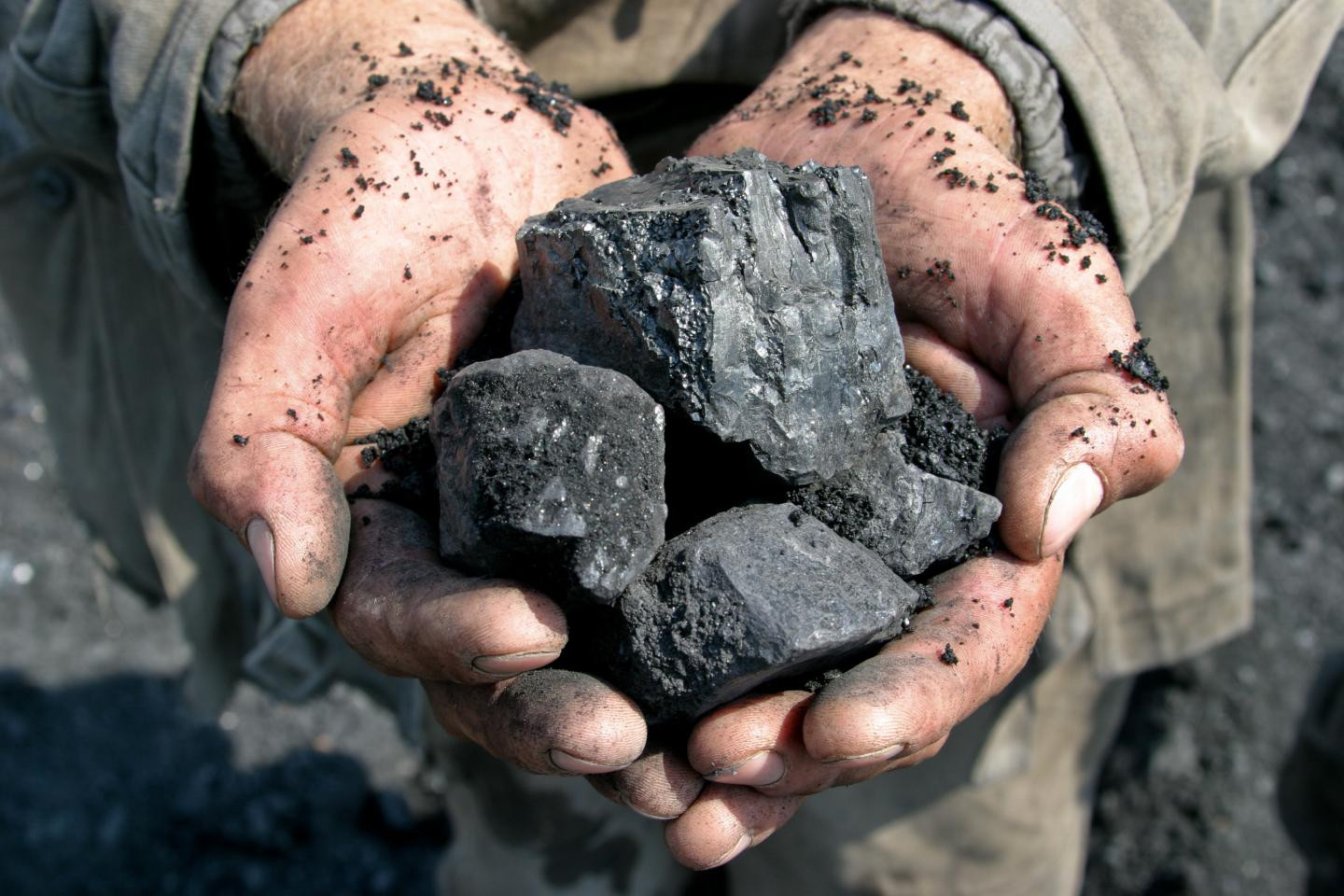Definisi
Pneumokoniosis adalah segala penyakit paru yang disebabkan oleh penghirupan debu dan serat, baik organik maupun anorganik. Biasanya, sumber debu dan serat ini adalah tempat bekerja, sehingga penyakit ini digolongkan sebagai penyakit akibat pekerjaan. Pneumokoniosis sendiri terbagi atas beberapa jenis, namun yang sering terjadi adalah asbestosis, silikosis, dan penyakit paru hitam (coal miner’s lung). Partikel-partikel ini dapat menyebabkan peradangan hingga pengerasan paru yang berujung pada penyakit paru yang tidak dapat dikembalikan.
Penyebab
Pneumokoniosis terjadi akibat paparan terhadap suatu partikel dalam jangka waktu yang lama. Kondisi ini terjadi setelah seseorang menghirup mineral halus atau debu kimia, seperti silika, batu bara, atau asbestos. Jika debu-debu ini menumpuk di paru-paru, sistem kekebalan tubuh akan menganggap debu tersebut sebagai benda asing sehingga akan menyerangnya. Akibatnya, jaringan paru meradang. Tidak hanya itu, dapat terbentuk jaringan parut pada paru, seperti akibat luka. Jaringan parut ini lebih kaku daripada jaringan paru normal, sehingga dapat membuat Anda kesulitan menarik napas dalam.
Jenis-jenis pneumokoniosis adalah sebagai berikut:
- Asbestosis disebabkan oleh asbestos
- Penyakit paru hitam (coal miner’s lung) disebabkan oleh batu bara
- Silikosis disebabkan oleh silika
- Penyakit paru coklat (brown lung) disebabkan oleh serat kapas atau serat lainnya
- Popcorn lung akibat diasetil, zat yang memberi rasa mirip mentega pada jagung brondong
Faktor Risiko
Paparan harian terhadap debu-debu yang menyebabkan pneumokoniosis tidak cukup untuk menjadi penyebab kondisi ini. Pneumokoniosis biasanya terjadi apabila seseorang bekerja di dekat atau bekerja langsung dengan debu-debu ini. Selain itu, peningkatan risiko juga dapat terjadi apabila Anda merokok serta terpapar debu dengan kadar yang cukup tinggi dalam waktu yang lama.
Gejala
Gejala pneumokoniosis secara umum adalah batuk berkepanjangan dan berdahak dalam jumlah banyak dan sesak napas. Gejala lainnya dapat muncul tergantung jenis pneumokoniosis yang dialami. Misalnya, jika seseorang mengalami asbestosis, akan terjadi penumpukan cairan di antara paru-paru dan dinding dada (pleura), yang disebut sebagai efusi pleura. Sementara itu, jika seseorang mengalami coal miner’s lung, batuk dapat disertai dahak berwarna kehitaman.
Diagnosis
Untuk mendiagnosis pneumokoniosis, dokter perlu mengetahui riwayat paparan debu yang Anda hadapi sehari-hari. Riwayat ini sangat berkaitan dengan pekerjaan Anda. Selain itu, dokter akan melakukan pemeriksaan secara langsung untuk mencari suara napas tambahan yang dapat menunjukkan adanya kelainan pada paru. Tidak hanya itu, dokter akan mengukur saturasi oksigen Anda. Saturasi oksigen menunjukkan banyaknya sel darah merah yang mengikat oksigen.
Pemeriksaan lainnya yang akan dilakukan adalah pemeriksaan foto rontgen dada. Foto rontgen dapat menunjukkan adanya plak atau tonjolan di daerah tertentu pada paru-paru. Pemeriksaan lainnya adalah computed tomography scan (CT scan), yang dapat menunjukkan kelainan pada ketinggian tertentu paru-paru. Untuk membedakan jaringan parut dan kanker, pemeriksaan magnetic resonance imaging (MRI) dapat dilakukan.
Selain itu, pemeriksaan fungsi paru dapat dilakukan. Pemeriksaan ini disebut sebagai spirometri. Saat pemeriksaan ini, Anda dapat diminta untuk bernapas biasa, melakukan sedikit aktivitas, serta menghirup obat untuk melihat fungsi paru. Pemeriksaan ini tidak hanya dapat melihat fungsi paru, tetapi juga dapat menemukan kondisi penyerta pneumokoniosis, seperti penyakit paru obstruktif kronik (PPOK). Penyakit ini ditandai dengan keterbatasan pengembangan paru.
Anda juga dapat menjalani pemeriksaan bronkoskopi. Pada pemeriksaan ini, dokter akan memasukkan selang dengan kamera di ujungnya untuk melihat saluran napas Anda, atau untuk mengambil jaringan pada saluran napas Anda. Apabila ada jaringan yang diambil, jaringan ini akan diamati dengan mikroskop. Dengan pemeriksaan jaringan ini, dokter dapat mengetahui debu jenis apa yang menyebabkan pneumokoniosis.
Apabila Anda bekerja pada sektor yang rentan, Anda dapat diminta untuk melakukan pemeriksaan secara rutin, misalnya 3-5 tahun sekali. Debu-debu tertentu, seperti batu bara, dapat menyebabkan gejala dengan relatif cepat. Sementara itu, pekerjaan yang melibatkan paparan terhadap silika biasanya baru akan menyebabkan gejala setelah 10-20 tahun.
Tata Laksana
Pneumokoniosis tidak dapat disembuhkan, namun dapat dikontrol. Jika Anda terdiagnosis pneumokoniosis, tata laksana bertujuan untuk mempertahankan fungsi paru-paru Anda yang masih sehat serta menangani gejala yang muncul. Anda mungkin akan diminta untuk berhenti dari pekerjaan yang menyebabkan kondisi tersebut. Jika Anda adalah seorang perokok, dokter akan menyarankan Anda untuk berhenti merokok. Berhenti merokok sangat penting untuk meningkatkan fungsi paru-paru. Obat-obatan tertentu dapat diberikan, misalnya obat hirup untuk membuka saluran napas yang tersumbat, serta obat antiradang untuk menurunkan peradangan pada saluran napas.
Jika kadar oksigen pada darah Anda rendah, Anda dapat dianjurkan untuk mendapatkan terapi oksigen. Anda akan memakai sungkup atau selang khusus yang mengalirkan oksigen dari tabung oksigen ke hidung Anda. Penggunaan terapi oksigen ini dapat dilakukan sepanjang hari untuk orang-orang tertentu, namun dapat pula hanya malam hari bagi orang-orang lainnya.
Karena sifatnya yang berkepanjangan dan tidak dapat disembuhkan, Anda sangat disarankan untuk kontrol rutin ke dokter. Kontrol ini berfungsi untuk memantau gejala dan fungsi paru Anda. Tidak hanya itu, dokter dapat memantau adanya kondisi lain yang muncul bersamaan dengan pneumokoniosis, seperti kanker paru dan fibrosis masif progresif, atau pembentukan jaringan parut yang parah dan dapat mengancam nyawa.
Jika Anda terdiagnosis pneumokoniosis, Anda dapat meminta dukungan orang-orang terdekat Anda. Anda juga dapat mengikuti kelompok dukungan tertentu, yaitu kelompok berisi orang-orang yang mengalami kondisi serupa dengan Anda. Jika kondisi ini menyebabkan Anda merasa stres atau cemas, Anda juga dapat berkonsultasi dengan dokter atau ahli kesehatan jiwa seperti psikolog atau psikiater.
Komplikasi
Pneumokoniosis dapat menyebabkan komplikasi yang parah. Komplikasi yang ada pada pneumokoniosis umumnya berupa pengerasan paru dan keganasan pada pleura (selaput yang melapisi paru) dan paru. Asbestosis terkait dengan penumpukan cairan di pleura dan kanker paru. Biasanya, kondisi ini akan menyebabkan gejala setelah paparan selama 20 tahun atau lebih. Silikosis dapat menyebabkan kanker paru dan meningkatkan kerentanan terhadap tuberkulosis. Orang yang memiliki coal miner’s lung juga memiliki risiko ini. Tidak hanya itu, mereka juga rentan mengalami PPOK yang meningkatkan risiko kematian.
Pencegahan
Cara terbaik untuk mencegah pneumokoniosis adalah menggunakan masker respirator di tempat kerja, karena masker ini dapat menangkal debu-debu mineral dari paru-paru Anda. Jika Anda baru saja terpapar debu halus, cucilah wajah dan tangan Anda sebelum makan dan minum. Hal ini akan membantu Anda mencegah penghirupan debu secara tidak sengaja. Jika pekerjaan Anda membuat Anda berisiko terkena pneumokoniosis, sebaiknya Anda menjalani pemeriksaan fisis dan foto rontgen secara rutin untuk memastikan paru-paru Anda sehat.
Kapan Harus ke Dokter?
Jika Anda bekerja di tempat yang memiliki banyak debu halus atau bahkan bekerja dengan debu-debu tersebut, sebaiknya Anda kontrol secara rutin ke dokter untuk memastikan paru-paru Anda sehat. Segeralah ke dokter apabila Anda mengalami batuk berkepanjangan dan sesak napas. Paparan debu halus dalam jangka waktu yang lama dapat menunjukkan kemungkinan diagnosis ke arah pneumokoniosis. Namun, pneumokoniosis dapat disertai oleh kondisi lain seperti PPOK, kanker paru, atau tuberkulosis, yang berpotensi mengancam nyawa apabila tidak segera ditangani.
- dr Ayu Munawaroh, MKK
DeLight, N., & Sachs, H. (2021). Pneumoconiosis. Retrieved 5 March 2022, from https://www.ncbi.nlm.nih.gov/books/NBK555902/
Pneumoconiosis. Retrieved 5 March 2022, from https://www.hopkinsmedicine.org/health/conditions-and-diseases/pneumoconiosis
Svoboda, E., & Boyce, P. (2019). What Is Pneumoconiosis?. Retrieved 5 March 2022, from https://www.webmd.com/lung/what-is-pneumoconiosis









